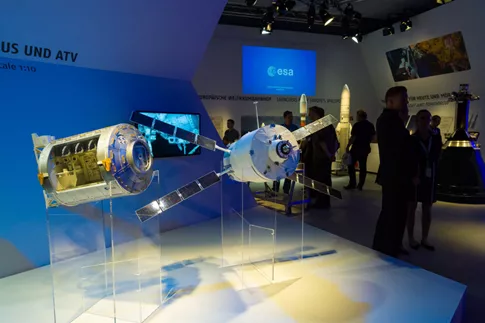
As part of a project with the European Space Agency (ESA) Dr. Emil Vassev and Prof Mike Hinchey are currently working on the development of autonomous systems in space exploration missions. These autonomous systems will enable spacecraft to adapt to unforeseen situations making them more resilient and able to self-adapt, self-repair and become more fit-for-purpose. BepiColombo is an ESA mission to Mercury.
BepiColombo will perform a series of scientific experiments, tests and measures. For example, it will make a complete map of Mercury at different wavelengths. Such a map will chart the planet’s mineralogy and composition of elements. Other experiments will determine whether the interior of the planet is molten or not, and investigate the extent and origin of Mercury’s magnetic field. Mike and Emil’s research in autonomous systems will enable the Bepicolombo spacecraft to self-adapt becoming more robust and able to spend longer in space without having to return for repairs thus completing the mission successfully.
Traditionally, requirements engineering is concerned with what a system should do and the constraints under which it must do it. Alongside traditional requirements engineering, requirements engineering for autonomous and self-adaptive systems (e.g., exploration robots, drones, autonomous cars, etc.) must address issues related to adaptation. In particular, what adaptations are possible, under what constraints and how those adaptations are to be implemented. Adaptations arise when a system needs to cope with changes in its operating environment in order to ensure that system’s objectives are achieved.
Mike and Emil’s research with the European Space Agency (ESA), has developed the Autonomy Requirements Engineering (ARE) approach to developing these types of systems. ARE converts adaptation issues into autonomy requirements where a technique known as Goal-Oriented Requirements Engineering (GORE) is used along with a model for Generic Autonomy Requirements (GAR). ARE was applied to a proofof- concept case study, to capture autonomy requirements of ESA’s BepiColombo Mission to Mercury, scheduled for launch in 2015.
By applying GORE, they have built goals models that subsequently helped them derive and organize the autonomy requirements for BepiColombo. They did this by defining the objectives of the mission that must be achieved in the system’s operational environment (space, Mercury, proximity to the Sun, etc.), and by identifying the problems that exist in this environment. Their research in autonomous systems will not only benefit future space missions but also exploration robots, drones and autonomous cars.